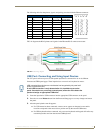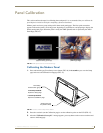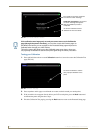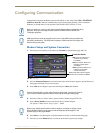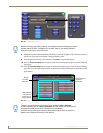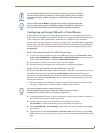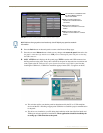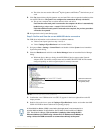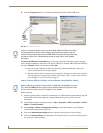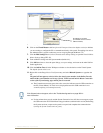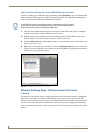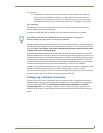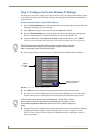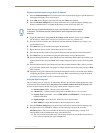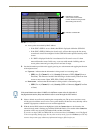
Configuring Communication
55
7" Modero Widescreen Touch Panels
The driver does not contain a Microsoft
®
digital signature and Windows
®
then informs you of
such.
9. Click Yes when told that a digital signature was not found. This action accepts the installation of the
new AMX USB driver. The panel is now configured to communicate directly with the PC.
This process completes the association between driver and device.
Each time the same touch panel is connected to the computer the driver is automatically
loaded (using a unique name - example USB LAN LINK #1, #2).
Each time a different touch panel is connected to the computer, the previous procedures
will need to be repeated.
10. Navigate back to the System Settings page.
Step 3: Confirm and View the current AMX USB device connections
The USB driver information can be confirmed via two different methods:
Via the Control panel (previous steps 1 and 2) or
Via the Unplug or Eject Hardware icon from the Taskbar.
1. Navigate to Start > Settings > Control Panel > and double-click the System icon to launch the
System Properties dialog.
2. Select the Hardware tab and click on the Device Manager button to launch the Device Manager
dialog.
Within the Device Manager dialog, the AMX USBLAN device appears under Network
Adapters (FIG. 54) and has a unique name such as AMX USB LAN LINK #2. The number
changes depending on which recognized panel is currently connected.
3. Confirm that a new USB detection icon (FIG. 55) appears in the lower-right taskbar on the PC
display window.
4. Double-click on the icon to open the Unplug or Eject Hardware window and confirm the AMX
USB LAN LINK has been installed and is operating properly.
FIG. 54 Device Manager dialog showing USB device
USB connected touch
panel (showing the
recognized panel)
A Virtual NetLinx Master (VNM) is used when the target panel is not connected to a
physical NetLinx Master. In this situation, the PC takes on the functions of a Master
via a Virtual NetLinx Master. This connection is made by either using the PC’s
Ethernet Address (via TCP/IP using a known PC’s IP Address as the Master) or
using a direct mini-USB connection to communicate directly to the panel.



